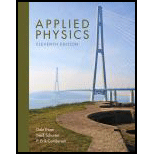
Applied Physics (11th Edition)
11th Edition
ISBN: 9780134159386
Author: Dale Ewen, Neill Schurter, Erik Gundersen
Publisher: PEARSON
expand_more
expand_more
format_list_bulleted
Concept explainers
Textbook Question
Chapter 11.1, Problem 6P
Explain why the gravitational force between the sun and Jupiter is greater than the gravitational force between sun and the earth even though the sun and the earth are much closer to one another than are the sun and Jupiter.
Expert Solution & Answer
Want to see the full answer?
Check out a sample textbook solution
Chapter 11 Solutions
Applied Physics (11th Edition)
Ch. 11.1 - Compare the gravitational force that (a) the earth...Ch. 11.1 - Find the gravitational force between the sun and...Ch. 11.1 - Find the gravitational force between the sun and...Ch. 11.1 - Find the gravitational force between the sun and...Ch. 11.1 - Find the gravitational force between the sun and...Ch. 11.1 - Explain why the gravitational force between the...Ch. 11.1 - A satellite is orbiting 3.22 105 m above the...Ch. 11.1 - If the satellite in Problem 7 is orbiting at twice...Ch. 11.1 - What is the gravitational force exerted between an...Ch. 11.1 - The Apollo 16 lunar module had a mass of 4240 kg....
Ch. 11.3 - The moon orbits 3.84 108 m from the earth. How...Ch. 11.3 - The moon orbits 3.84 108 m from the earth. How...Ch. 11.3 - Find the orbital velocity for Mercury as it orbits...Ch. 11.3 - Prob. 4PCh. 11.3 - Find the orbital velocity for Saturn as it orbits...Ch. 11.3 - Find the orbital velocity for Uranus as it orbits...Ch. 11.3 - Find the time Mercury takes to orbit the sun.Ch. 11.3 - Find the time the earth takes to orbit the sun.Ch. 11.3 - Find the time Saturn takes to orbit the sun.Ch. 11.3 - Find the time Uranus takes to orbit the sun.Ch. 11 - What type of force is related to the mass of...Ch. 11 - As the distance increases between two objects, the...Ch. 11 - As the mass of two objects increases, the...Ch. 11 - The mass of a satellite is increased. In order to...Ch. 11 - As the distance increases between a satellite and...Ch. 11 - Explain why the gravitational force that exists...Ch. 11 - What would happen to your weight on earth if the...Ch. 11 - What would happen to your weight on earth if the...Ch. 11 - Explain how a satellite in orbit is in a constant...Ch. 11 - According to Isaac Newton, how is the motion of a...Ch. 11 - Most planets actually have slightly elliptical...Ch. 11 - Does the mass of a satellite influence the time it...Ch. 11 - Two 0.300-kg apples are 25.0 cm apart from one...Ch. 11 - Two 65.0-kg people are standing 1.00 m apart. What...Ch. 11 - Find the weight of a 65.0-kg person on the earth...Ch. 11 - Find the weight of a 65.0-kg person on Jupiter (in...Ch. 11 - Find the weight of a 65.0-kg person on Pluto (in...Ch. 11 - If the moon orbited at one half the present...Ch. 11 - If the moon orbited at twice the present distance...Ch. 11 - If the moon orbited at four times the present...Ch. 11 - Using Newtons law of universal gravitation, find...Ch. 11 - If an 85.0-kg astronaut in a space shuttle orbits...Ch. 11 - The gravitational differences between the earth...Ch. 11 - (a) How far from the center of the earth must a...Ch. 11 - Prob. 3ACCh. 11 - Flight engineers for the Apollo Lunar Orbiter...Ch. 11 - (a) What is the gravitational force on a 65.7-kg...
Additional Science Textbook Solutions
Find more solutions based on key concepts
9. The forces in FIGURE EX6.9 act on a 2.0 kg object. What are the values of ax and ay, the x- and y-componen...
Physics for Scientists and Engineers: A Strategic Approach, Vol. 1 (Chs 1-21) (4th Edition)
16. * Flea jump flea pushes off a surface by extending its rear legs for a distance of slightly more than 2.0 ...
College Physics
A thin plate has a round hole whose diameter in its rest frame is D. The plate is parallel to the ground and mo...
Modern Physics
What class of motion, natural or violent, did Aristotle attribute to motion of the Moon?
Conceptual Physics (12th Edition)
Shoveling snow can be extremely taxing because the arms have such a low efficiency in this activity. Suppose a ...
College Physics
11. Suppose your body was able to use the chemical energy in gasoline. How far could you pedal a bicycle at 15 ...
College Physics: A Strategic Approach (4th Edition)
Knowledge Booster
Learn more about
Need a deep-dive on the concept behind this application? Look no further. Learn more about this topic, physics and related others by exploring similar questions and additional content below.Similar questions
- Calculate the mass of the Sun based on data for average Earth’s orbit and compare the value obtained with the Sun’s commonly listed value of 1.9891030kg .arrow_forwardA planet has two moons with identical mass. Moon 1 is in a circular orbit of radius r. Moon 2 is in a circular orbit of radius 2r. The magnitude of the gravitational force exerted by the planet on Moon 2 is (a) four times as large (b) twice as large (c) the same (d) half as large (e) one-fourth as large as the gravitational force exerted by the planet on Moon 1.arrow_forwardA geosynchronous Earth satellite is one that has an orbital period of precisely 1 day. Such orbits are sueful for communication and weather observation because the satellite remains above the same point on Earth (provided it orbits in the equatorial plane in the same direction as Earth’s rotation). Calculate the radius of such an orbit based on the data for Earth in Appendis D.arrow_forward
- A point mass m is located a distance D from the nearest end of a thin rod of mass M and length L along the axis of the rod. Find the gravitational force exerted on the point mass by the rod.arrow_forwardA planet has two moons with identical mass. Moon 1 is in a circular orbit of radius r. Moon 2 is in a circular orbit of radius 2r. The magnitude of the gravitational force exerted by the planet on Moon 2 is (a) four times as large (b) twice as large (c) the same (d) half as large (e) one-fourth as large as the gravitational force exerted by the planet on Moon 1.arrow_forwardSuppose the gravitational acceleration at the surface of a certain moon A of Jupiter is 2 m/s2. Moon B has twice the mass and twice the radius of moon A. What is the gravitational acceleration at its surface? Neglect the gravitational acceleration due to Jupiter. (a) 8 m/s2 (b) 4 m/s2 (c) 2 m/s2 (d) 1 m/s2 (e) 0.5 m/s2arrow_forward
- If a spacecraft is headed for the outer solar system, it may require several gravitational slingshots with planets in the inner solar system. If a spacecraft undergoes a head-on slingshot with Venus as in Example 11.6, find the spacecrafts change in speed vS. Hint: Venuss orbital period is 1.94 107 s, and its average distance from the Sun is 1.08 1011 m.arrow_forwardAn object of mass m is located on the surface of a spherical planet of mass M and radius R. The escape speed from the planet does not depend on which of the following? (a) M (b) m (c) the density of the planet (d) R (e) the acceleration due to gravity on that planetarrow_forwardA planet has two moons of equal mass. Moon 1 is in a circular orbit of radius r. Moon 2 is in a circular orbit of radius 2r. What is the magnitude of the gravitational force exerted by the planet on Moon 2? (a) four times as large as that on Moon 1 (b) twice as large as that on Moon 1 (c) equal to that on Moon 1 (d) half as large as that on Moon 1 (e) one-fourth as large as that on Moon 1arrow_forward
- The Sun has a mass of approximately 1.99 1030 kg. a. Given that the Earth is on average about 1.50 1011 m from the Sun, what is the magnitude of the Suns gravitational field at this distance? b. Sketch the magnitude of the gravitational field due to the Sun as a function of distance from the Sun. Indicate the Earths position on your graph. Assume the radius of the Sun is 7.00 108 m and begin the graph there. c. Given that the mass of the Earth is 5.97 1024 kg, what is the magnitude of the gravitational force on the Earth due to the Sun?arrow_forwardWhat is the gravitational acceleration close to the surface of a planet with a mass of 2ME and radius of 2RE where ME, and RE are the mass and radius of Earth, respectively? Answer as a multiple of g, the magnitude of the gravitational acceleration near Earths surface. (See Section 7.5.)arrow_forwardHow far from the center of the Sun would the net gravitational force of Earth and the Sun on a spaceship be zero?arrow_forward
arrow_back_ios
SEE MORE QUESTIONS
arrow_forward_ios
Recommended textbooks for you
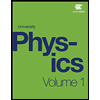 University Physics Volume 1PhysicsISBN:9781938168277Author:William Moebs, Samuel J. Ling, Jeff SannyPublisher:OpenStax - Rice University
University Physics Volume 1PhysicsISBN:9781938168277Author:William Moebs, Samuel J. Ling, Jeff SannyPublisher:OpenStax - Rice University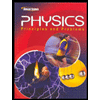 Glencoe Physics: Principles and Problems, Student...PhysicsISBN:9780078807213Author:Paul W. ZitzewitzPublisher:Glencoe/McGraw-Hill
Glencoe Physics: Principles and Problems, Student...PhysicsISBN:9780078807213Author:Paul W. ZitzewitzPublisher:Glencoe/McGraw-Hill Physics for Scientists and Engineers, Technology ...PhysicsISBN:9781305116399Author:Raymond A. Serway, John W. JewettPublisher:Cengage Learning
Physics for Scientists and Engineers, Technology ...PhysicsISBN:9781305116399Author:Raymond A. Serway, John W. JewettPublisher:Cengage Learning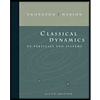 Classical Dynamics of Particles and SystemsPhysicsISBN:9780534408961Author:Stephen T. Thornton, Jerry B. MarionPublisher:Cengage Learning
Classical Dynamics of Particles and SystemsPhysicsISBN:9780534408961Author:Stephen T. Thornton, Jerry B. MarionPublisher:Cengage Learning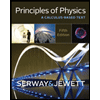 Principles of Physics: A Calculus-Based TextPhysicsISBN:9781133104261Author:Raymond A. Serway, John W. JewettPublisher:Cengage Learning
Principles of Physics: A Calculus-Based TextPhysicsISBN:9781133104261Author:Raymond A. Serway, John W. JewettPublisher:Cengage Learning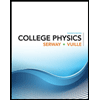 College PhysicsPhysicsISBN:9781305952300Author:Raymond A. Serway, Chris VuillePublisher:Cengage Learning
College PhysicsPhysicsISBN:9781305952300Author:Raymond A. Serway, Chris VuillePublisher:Cengage Learning

University Physics Volume 1
Physics
ISBN:9781938168277
Author:William Moebs, Samuel J. Ling, Jeff Sanny
Publisher:OpenStax - Rice University

Glencoe Physics: Principles and Problems, Student...
Physics
ISBN:9780078807213
Author:Paul W. Zitzewitz
Publisher:Glencoe/McGraw-Hill

Physics for Scientists and Engineers, Technology ...
Physics
ISBN:9781305116399
Author:Raymond A. Serway, John W. Jewett
Publisher:Cengage Learning

Classical Dynamics of Particles and Systems
Physics
ISBN:9780534408961
Author:Stephen T. Thornton, Jerry B. Marion
Publisher:Cengage Learning

Principles of Physics: A Calculus-Based Text
Physics
ISBN:9781133104261
Author:Raymond A. Serway, John W. Jewett
Publisher:Cengage Learning

College Physics
Physics
ISBN:9781305952300
Author:Raymond A. Serway, Chris Vuille
Publisher:Cengage Learning
What Is Circular Motion? | Physics in Motion; Author: GPB Education;https://www.youtube.com/watch?v=1cL6pHmbQ2c;License: Standard YouTube License, CC-BY